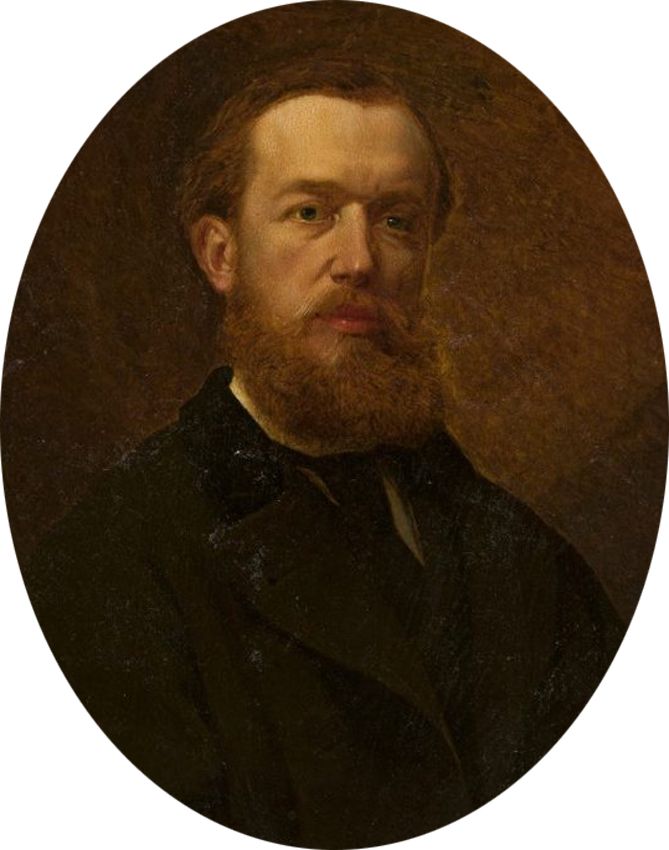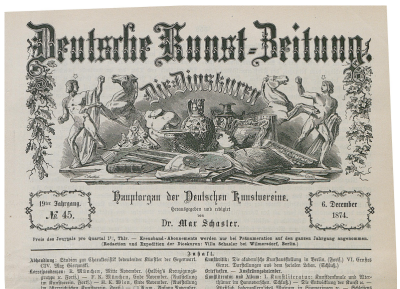Maksymilian Gierymski
Mediathek Sorted
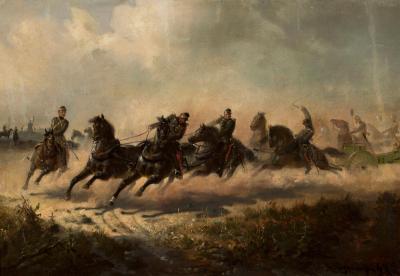
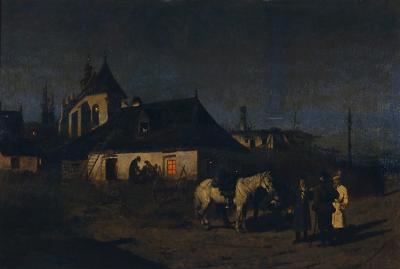
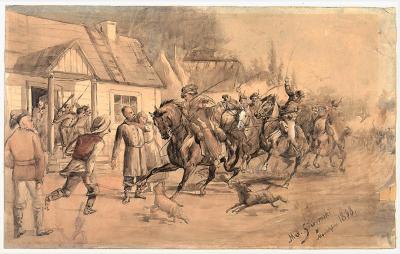
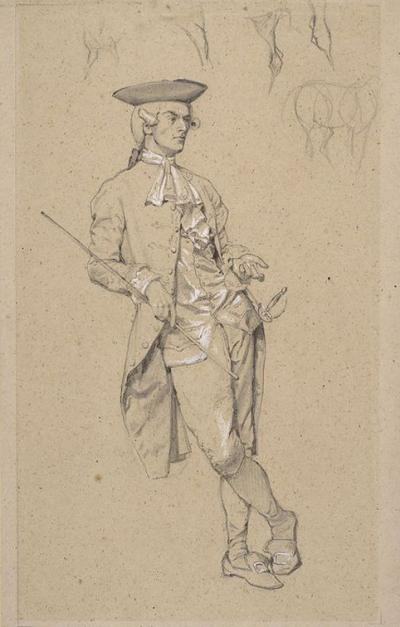
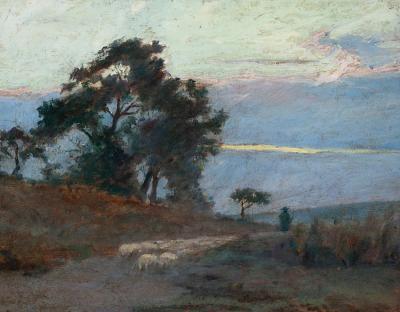

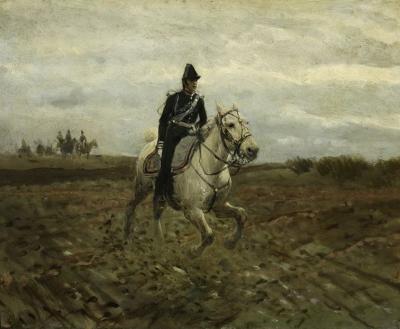
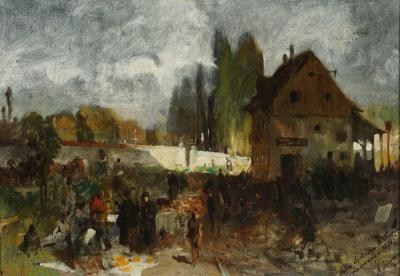
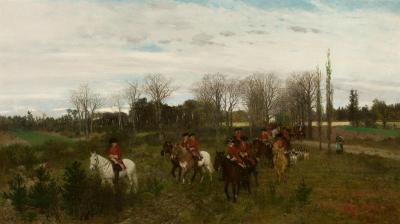
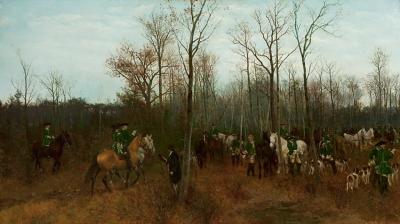
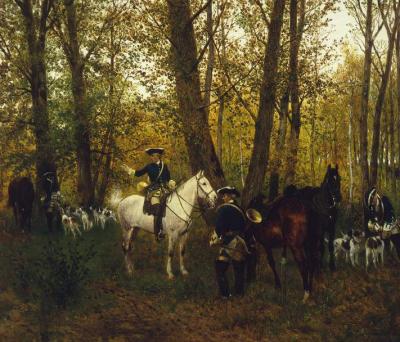
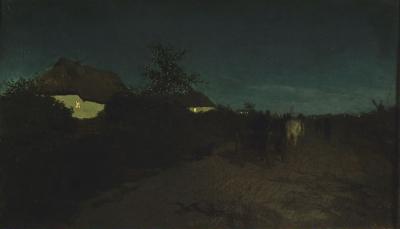
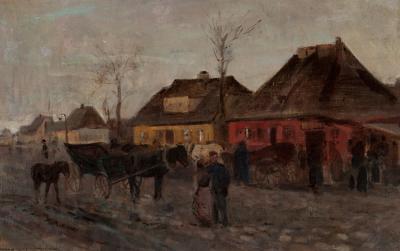
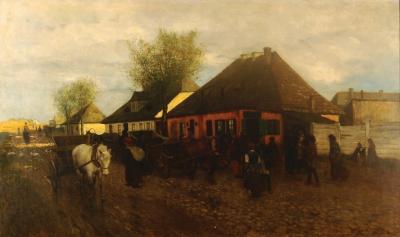
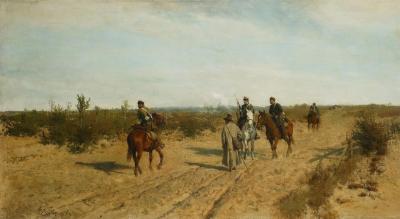
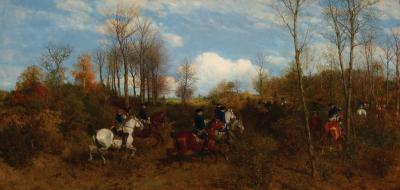

Today the term realists is still used to describe painters of the French Barbizon school – like Rousseau, Dupré, Daubigny, Diaz, Corot and Millet – who left the Paris Academy in 1830 to paint direct from nature in the village of Barbizon in the Forest of Fontainebleau, and capture simple landscape motifs, the so-called “paysage intime”. If German artists had never been to Paris, at the latest they were able to view paintings by French realists and their successors at the 1st International Exhibition of Art in the Munich Glaspalast in 1869. That said, Gierymski’s teachers at the Munich Academy did not teach open-air painting, and he himself was not an open-air painter. Nonetheless from the 1830s onwards it was usual in Germany to go out into the countryside to study and paint sketches in oils. Artists would then return to their workshops to compose landscapes and historic scenes. From Gierymski’s surviving works we know that he made sketches in oils in the countryside around Munich near Schleißheim in the Bavarian mountains, and also during his visits to Poland. Using these as a basis he then created finished paintings in his workshop. Proof of this is provided by his sketches from Poland “In front of the Cemetery” and “Springtime in a Small Town” (Ill. 8, 13), whereby he only composed his painting of “Springtime…” (Ill. 14) some years later in a slightly different variation.
In his workshop he created “atmospheric landscapes” with an “intuitively poetic effect” (Aßmus) from memory and with a trained “romantic imagination”. Paintings from preliminary sketches were executed in meticulous detail. These included the artist’s “Landscape at Dawn” (Ill. 5) and his beloved night pictures (Ill. 2, 12). On the grounds of the landscapes he saw in Poland which he used as backdrops for his pictures of insurgents (Ill. 15) and his rococo hunting scenes (Ill. 9-11, 16), contemporaries regarded Gierymski as the artist who transformed monotonous landscapes under the melancholy grey Polish sky, beneath which broad stretches of sand and large pine forests alternated with uniform heathland and riverside pastures between which streamed the yellow waves of the Vistula, and raised them to motifs worthy of being captured in painting.
Axel Feuß, December 2015
Works in museums:
Art Museum Łódź / Muzeum Sztuki w Łodzi
National Museum in Warsaw / Muzeum Narodowe w Warszawie
Silesian Museum, Kattowitz / Muzeum Śląskie, Katowice
Regional Gallery Reichenberg/Liberec / Oblastní galerie, Liberec
National Museum in Poznan / Muzeum Narodowe w Poznaniu
Art Hall, Kiel
National Museum Krakow / Muzeum Narodowe w Krakowie
Upper Silesian, Bytom / Muzeum Górnośląskie w Bytomiu
Braith-Mali-Museum, Biberach an der Riß
Further reading:
Robert Aßmus: Studien zur Charakteristik bedeutender Künstler der Gegenwart CIV. Max Gierymski (obituary), in: Deutsche Kunst-Zeitung Die Dioskuren. Hauptorgan der deutschen Kunstvereine, vol. 19, no. 45, page 357 f. and no. 47, page 377 f., Munich 1874 (see PDF)
Hyacinth Holland, in: Allgemeine Deutsche Biographie 9 (1879), p. 150-151 (www.deutsche-biographie.de)
Maksymilian Gierymski 1846-1874. Malarstwo i rysunek, adapted by Halina Stępień, Exhibition catalogue, National Museum Warsaw, 1974
Münchner Maler im 19. Jahrhundert = Bruckmanns Lexikon der Münchner Kunst in four volumes, vol. 2, Munich 1982, page 27
Ewa Micke-Broniarek (National Museum Warsaw) at www.culture.pl, 2004
H. Kubaszewska, in: Saur Allgemeines Künstlerlexikon (AKL), vol. 53, 2007
Birgit Jooss: Zwischen Antikenstudium und Meisterklasse. Der Unterrichtsalltag an der Münchner Kunstakademie im 19. Jahrhundert, in: Eliza Ptaszyńska (ed.): Ateny nad Izarą. Malarstwo monachijskie. Studia i szkice, Suwałki 2012, pp. 23-45
Maksymilian Gierymski. Dzieła, inspiracje, recepcj, exhibition catalogue National Museum Krakow / Muzeum Narodowe w Krakowie, Krakow 2014





















































































